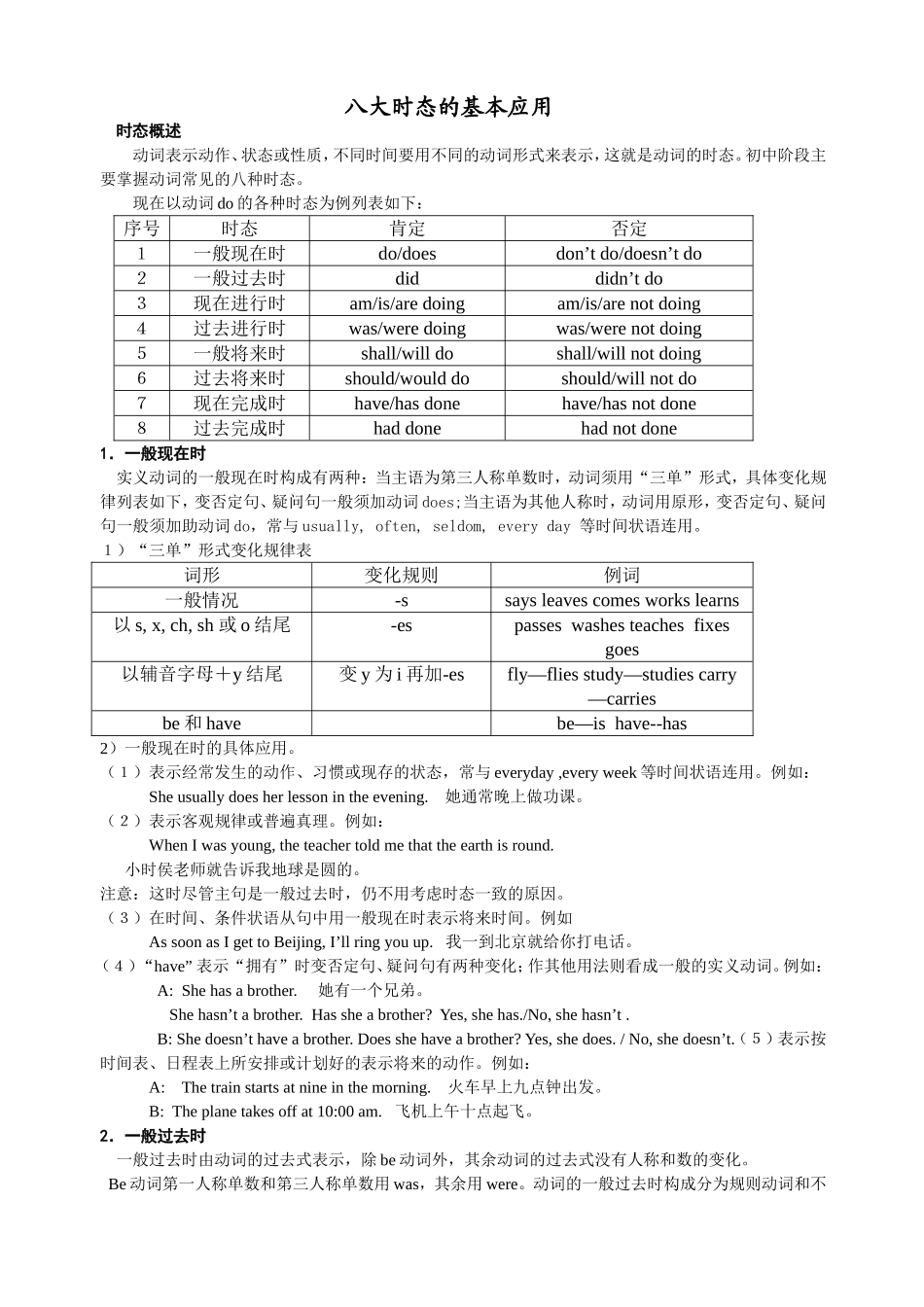八大时态的基本应用时态概述动词表示动作、状态或性质,不同时间要用不同的动词形式来表示,这就是动词的时态。初中阶段主要掌握动词常见的八种时态。现在以动词 do 的各种时态为例列表如下:序号时态肯定否定1一般现在时do/doesdon’t do/doesn’t do2一般过去时diddidn’t do3现在进行时am/is/are doingam/is/are not doing4过去进行时was/were doingwas/were not doing5一般将来时shall/will doshall/will not doing6过去将来时should/would doshould/will not do7现在完成时have/has donehave/has not done8过去完成时had donehad not done1.一般现在时 实义动词的一般现在时构成有两种:当主语为第三人称单数时,动词须用“三单”形式,具体变化规律列表如下,变否定句、疑问句一般须加动词 does;当主语为其他人称时,动词用原形,变否定句、疑问句一般须加助动词 do,常与 usually, often, seldom, every day 等时间状语连用。1)“三单”形式变化规律表词形变化规则例词一般情况-ssays leaves comes works learns以 s, x, ch, sh 或 o 结尾-espasses washes teaches fixes goes以辅音字母+y 结尾变 y 为 i 再加-esfly—flies study—studies carry—carriesbe 和 havebe—is have--has2)一般现在时的具体应用。(1)表示经常发生的动作、习惯或现存的状态,常与 everyday ,every week 等时间状语连用。例如:She usually does her lesson in the evening. 她通常晚上做功课。(2)表示客观规律或普遍真理。例如: When I was young, the teacher told me that the earth is round. 小时侯老师就告诉我地球是圆的。注意:这时尽管主句是一般过去时,仍不用考虑时态一致的原因。(3)在时间、条件状语从句中用一般现在时表示将来时间。例如 As soon as I get to Beijing, I’ll ring you up. 我一到北京就给你打电话。(4)“have” 表示“拥有”时变否定句、疑问句有两种变化;作其他用法则看成一般的实义动词。例如:A: She has a brother. 她有一个兄弟。 She hasn’t a brother. Has she a brother? Yes, she has./No, she hasn’t .B: She doesn’t have a brother. Does she have a brother? Yes, she does. / No, she doesn’t.(5)表示按时间表、日程表上所安排或计划好的...


